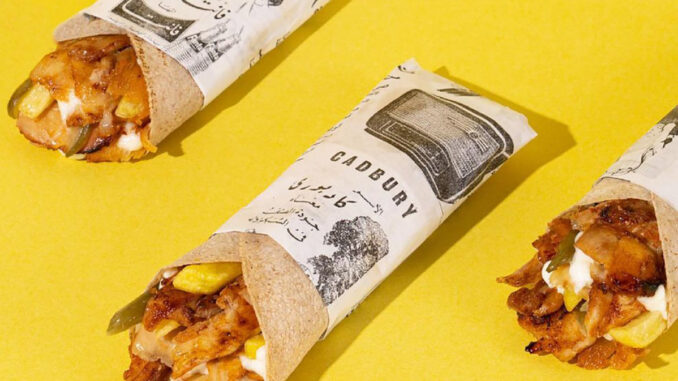
Shawarma, with its tantalizing aroma, savory flavors, and succulent meat, stands as a beloved culinary delight not just in Saudi Arabia but across the Middle East and beyond. Rooted in ancient culinary traditions and steeped in cultural significance, Shawarma has evolved into a global sensation, captivating taste buds and igniting culinary passions. In this comprehensive guide, we embark on a gastronomic journey to explore the history, ingredients, and preparation of Shawarma, immersing ourselves in the rich tapestry of Saudi Arabian culinary heritage.
History of Shawarma: From Ancient Roots to Modern Marvel
The history of Shawarma can be traced back to the Levant region, where it originated as a method of cooking meat on a vertical rotisserie or spit. The word “Shawarma” itself is derived from the Turkish word “çevirme,” meaning “turning,” reflecting the rotating motion of the meat as it cooks. Over time, Shawarma spread throughout the Middle East, becoming a staple street food and a symbol of hospitality and community gatherings.
Ingredients of Shawarma: A Symphony of Flavors and Textures
The key ingredients of Shawarma vary depending on regional preferences and family recipes, but commonly include:
- Meat: Thinly sliced layers of marinated meat, traditionally lamb, chicken, or beef, are stacked on a vertical rotisserie and slow-roasted to perfection.
- Marinade: A flavorful marinade made from a blend of spices, herbs, garlic, lemon juice, and yogurt tenderizes the meat and infuses it with aromatic flavors.
- Spices: Aromatic spices such as cumin, coriander, paprika, turmeric, and cinnamon add depth and complexity to the marinade, enhancing the flavor of the meat.
- Toppings: Shawarma is typically served with a variety of toppings, including fresh vegetables such as tomatoes, onions, cucumbers, and lettuce, as well as pickles, tahini sauce, and hot sauce.
- Flatbread: Warm, soft flatbreads such as pita or lavash are used to wrap the flavorful meat and toppings, creating a portable and satisfying meal.
Preparation of Shawarma: Crafting a Culinary Masterpiece
The preparation of Shawarma is a labor-intensive process that requires skill, patience, and attention to detail. While variations exist in cooking methods and techniques, the general steps involved in preparing Shawarma include:
- Marinating the Meat: Thinly sliced meat is marinated in a mixture of spices, herbs, garlic, lemon juice, and yogurt for several hours or overnight, allowing the flavors to penetrate the meat and tenderize it.
- Stacking the Meat: The marinated meat slices are stacked onto a vertical rotisserie or spit, forming a cone-shaped mound that rotates slowly over a heat source, allowing the meat to cook evenly and develop a crispy exterior.
- Roasting the Meat: The stacked meat is slowly roasted on the rotisserie, with the outer layers caramelizing and crisping up while the inner layers remain juicy and tender.
- Slicing and Serving: Once fully cooked, the outer layers of the meat are shaved off in thin slices using a sharp knife or electric slicer, creating tender, flavorful shavings of meat that are ready to be served.
- Assembly: The sliced meat is typically wrapped in warm flatbread, along with a selection of fresh vegetables, pickles, and sauces, creating a delicious and satisfying Shawarma sandwich or wrap.
Variations of Shawarma: Regional Delights and Culinary Innovations
While Shawarma is a beloved dish across the Middle East, variations exist in different countries and regions, each with its own unique twist and flavor profile. Some popular variations of Shawarma include:
- Chicken Shawarma: A lighter and milder version of Shawarma, featuring tender slices of marinated chicken cooked on a vertical rotisserie.
- Beef Shawarma: A heartier and more robust version of Shawarma, featuring thinly sliced beef marinated in a flavorful blend of spices and herbs.
- Lamb Shawarma: A rich and indulgent version of Shawarma, featuring succulent slices of marinated lamb cooked to perfection on a vertical rotisserie.
- Vegetarian Shawarma: A meat-free version of Shawarma, featuring grilled or roasted vegetables such as eggplant, zucchini, and bell peppers, seasoned with Shawarma spices and wrapped in flatbread.
Conclusion: Celebrating the Culinary Legacy of Shawarma
In conclusion, Shawarma stands as a shining example of Saudi Arabian culinary craftsmanship, blending ancient traditions with modern innovations to create a dish that delights the senses and brings people together. With its rich history, diverse ingredients, and mouthwatering flavors, Shawarma transcends borders and cultures, uniting food lovers around the world in a shared appreciation for good food and good company. Whether enjoyed as a quick street food snack or a hearty meal shared with family and friends, Shawarma invites us to savor the simple joys of life and celebrate the timeless tradition of communal dining.